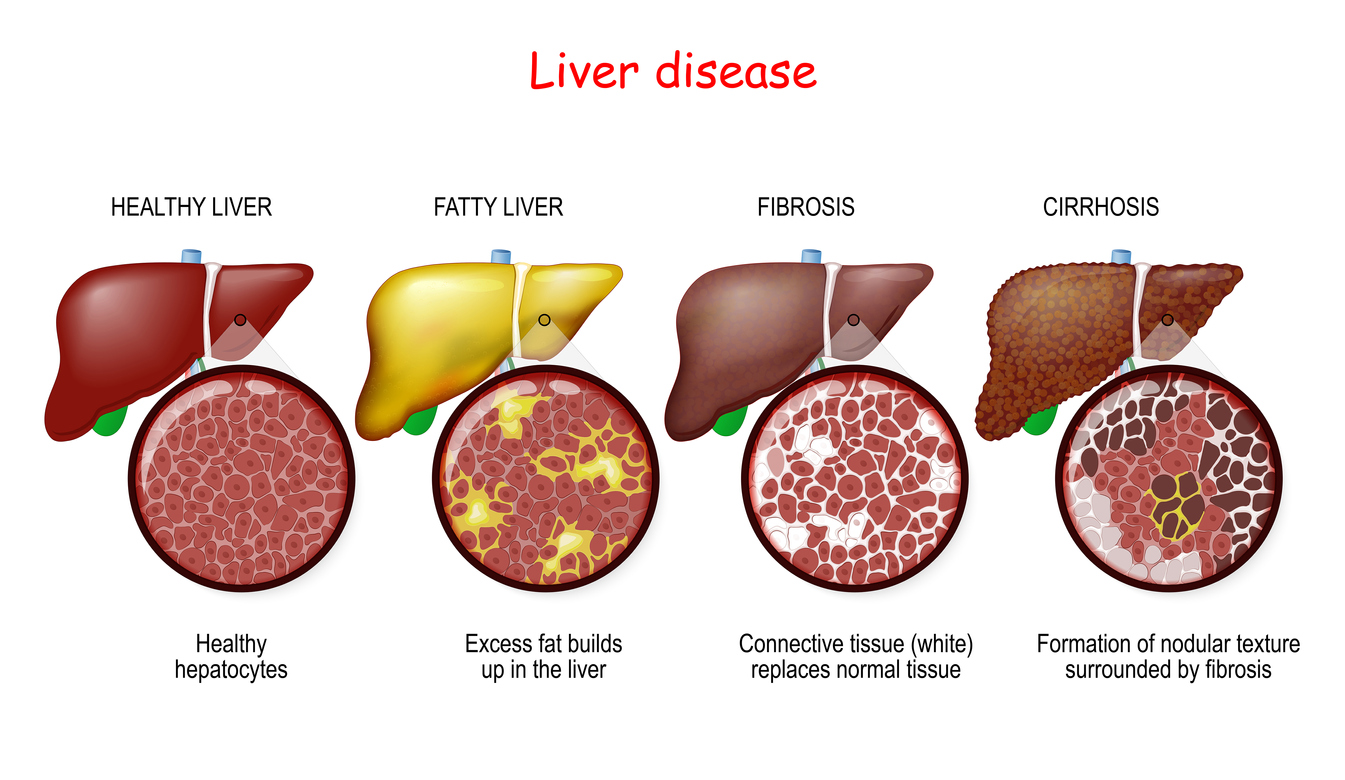
Cirrhosis: Prevention and Maintaining a Healthy Liver
Cirrhosis is a late stage of scarring (fibrosis) of the liver caused by many forms of liver diseases and conditions, such as hepatitis and chronic alcoholism. The liver performs several essential functions, including detoxifying harmful substances in your body, cleaning your blood, and making vital nutrients. Cirrhosis can result in liver failure, a condition where the liver cannot perform its vital functions. Understanding how to prevent cirrhosis and maintain a healthy liver is crucial for overall well-being.
Understanding Cirrhosis
Cirrhosis occurs when the liver is damaged repeatedly and tries to repair itself. During this process, scar tissue forms. As the cirrhosis progresses, more scar tissue forms, making it difficult for the liver to function.
Advanced cirrhosis is life-threatening. The liver damage done by cirrhosis generally can’t be undone, but if liver cirrhosis is diagnosed early and the cause is treated, further damage can be limited and, rarely, reversed.
Causes of Cirrhosis
Several factors and conditions can lead to cirrhosis, including:
- Chronic Alcoholism: Long-term alcohol abuse is one of the most common causes of cirrhosis.
- Hepatitis B and C: Chronic viral hepatitis causes inflammation and damage to liver cells.
- Nonalcoholic Fatty Liver Disease (NAFLD): A condition often linked to obesity and diabetes, leading to liver fat accumulation.
- Genetic Conditions: Diseases like hemochromatosis and Wilson’s disease can cause cirrhosis.
- Bile Duct Diseases: Conditions that block bile ducts, such as primary biliary cirrhosis, can lead to cirrhosis.
Symptoms of Cirrhosis
Early-stage cirrhosis often does not cause noticeable symptoms. As the disease progresses, symptoms may include:
- Fatigue: Persistent tiredness and weakness.
- Easy Bruising and Bleeding: Due to the liver’s reduced ability to produce clotting proteins.
- Jaundice: Yellowing of the skin and eyes due to bilirubin buildup.
- Itchy Skin: Resulting from bile products deposited in the skin.
- Swelling: Fluid accumulation in the legs (edema) and abdomen (ascites).
- Loss of Appetite: Leading to weight loss and malnutrition.
- Nausea and Vomiting: Frequent digestive issues.
- Spiderlike Blood Vessels: Visible on the skin.
Preventing Cirrhosis
Preventing cirrhosis involves managing risk factors and maintaining a healthy lifestyle. Here are key strategies for prevention:
Avoid Alcohol Abuse
Limiting alcohol intake is crucial. For those who already have liver disease, avoiding alcohol completely is essential. Support groups and counseling can help individuals struggling with alcohol dependency.
Vaccination
Vaccinations for hepatitis A and B can prevent these infections, reducing the risk of cirrhosis. Practicing safe sex and avoiding sharing needles can also prevent hepatitis transmission.
Healthy Diet and Weight Management
Eating a balanced diet rich in fruits, vegetables, lean proteins, and whole grains can support liver health. Maintaining a healthy weight through diet and regular exercise can prevent NAFLD, a significant risk factor for cirrhosis.
Regular Medical Check-ups
Regular check-ups with a healthcare provider can help monitor liver health, especially for those at risk of liver diseases. Blood tests and imaging can detect early liver damage.
Avoiding Toxins
Limiting exposure to harmful chemicals and toxins can protect the liver. Always follow safety instructions when using household or industrial chemicals, and avoid unnecessary medications.
Maintaining a Healthy Liver
A healthy liver is vital for overall health. Here are tips for maintaining liver health:
Stay Hydrated
Drinking plenty of water helps the liver function optimally by assisting in the detoxification process.
Exercise Regularly
Regular physical activity supports a healthy weight and reduces the risk of liver disease.
Safe Medication Use
Always follow prescribed dosages and avoid mixing medications without consulting a healthcare provider. Overuse of medications, especially pain relievers like acetaminophen, can damage the liver.
Avoid Risky Behaviors
Practices such as safe sex, avoiding illegal drug use, and ensuring any body modifications like tattoos or piercings are done with sterile equipment can prevent infections that affect the liver.
Regular Health Screenings
For those with risk factors such as a family history of liver disease or chronic hepatitis, regular screenings can detect early signs of liver problems, allowing for prompt treatment and prevention of cirrhosis progression.
Understanding the causes and symptoms of cirrhosis, along with implementing preventative measures and maintaining a healthy lifestyle, can significantly reduce the risk of developing cirrhosis. Early detection and lifestyle changes are key to managing liver health and preventing cirrhosis from progressing to a life-threatening stage. Regular medical consultations and adopting a healthy lifestyle can ensure a healthier liver and overall well-being.
